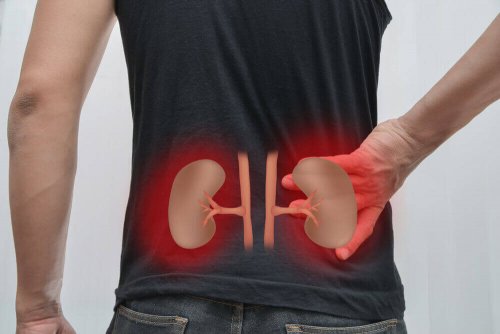The Uses of Diphenidol

Diphenidol is a drug that has properties to treat vertigo and nausea – it’s an antiemetic. It acts on the vestibular apparatus to control peripheral vertigo. It exerts its antiemetic effect directly on specific central nervous system receptors. Would you like to know more about it? Find out more below!
The reasons why doctors prescribe diphenidol

Doctors mainly prescribe diphenidol for the prevention and control of peripheral vertigo. Peripheral vertigo occurs in Meniere’s disease (MD), labyrinthitis, middle ear surgery, and motion sickness.
Vertigo is a sensation of motion or spinning. People with vertigo feel as though they’re actually spinning or moving or as if the world was spinning around them.
Peripheral vertigo is caused by a problem in the part of the inner ear that controls balance. The problem may also involve the vestibular nerve, which is the nerve that connects the inner ear and brainstem.
In addition, this disease can be caused by any of the following reasons:
- Benign postural vertigo
- Drugs such as aminoglycoside antibiotics, cisplatin, diuretics, or salicylates
- An injury such as head trauma
- Vestibular nerve inflammation
- Irritation and swelling of the inner ear, labyrinthitis
- Meniere’s disease
- Pressure in the vestibular nerve, usually due to a non-cancerous tumor, such as a meningioma or schwannoma
Diphenidol is also indicated for the prevention and control of the nausea and vomiting caused by chemotherapy and radiotherapy treatments.
How to take this medicine
Patients should take this medicine with food to avoid or reduce the gastrointestinal irritation that it may cause. The dose in adults to treat vertigo, nausea, and vomiting is one tablet every four hours for as long as necessary.
However, some patients may require two tablets every four hours. The maximum daily dose of diphenidol is 300 mg. The intestines and stomach absorb it well and it reaches peak blood levels between 1.5 and 3 hours after ingestion. Also, it’s excreted in urine.
Discover more here: What’s Benign Paroxysmal Positional Vertigo?
Contraindications and precautions

Patients with impaired kidney function must be careful because this drug may build up in their bodies. Moreover, this drug is contraindicated in the following cases:
- Hypersensitivity to the drug
- Intestinal obstruction
- Obstruction of the urinary tract
- Kidney failure
- Glaucoma
- Hypotension
Doctors advise against using it to treat the nausea and vomiting pregnancy causes, as well as in babies under six months. Also, experts advise against intravenous administration in patients with a history of sinus tachycardia. This is because this drug can trigger a heart attack in these patients.
Side effects
Due to its possible side effects, its intramuscular use is limited to hospitalized patients. The side effects include visual and auditory hallucinations, disorientation, and confusion.
These reactions may occur within three days from the start of treatment. Usually, they disappear spontaneously if the patient stops treatment.
The incidence of auditory and visual hallucinations, disorientation, and confusion is very low. However, patients may also suffer from drowsiness, overstimulation, depression, sleep disorders, dry mouth, nausea, dyspepsia, and blurred vision.
In rare cases, dizziness, skin rashes, headache, or heartburn may appear. Also, a transient drop in blood pressure may occur.
This article may also interest you: Reduce Vertigo with These Natural Remedies
Can it interact with other medications?
The antiemetic effect of diphenidol may mask the signs of an overdose of other drugs. Likewise, this drug can make it difficult to diagnose other conditions, such as bowel obstruction.
It has a weak anticholinergic effect, which is similar to the one that the treatment with drugs such as atropine or scopolamine produce. For this reason, patients shouldn’t take it along with anticholinergic drugs, as it can weaken their effects.
However, side effects increase if a patient takes this drug along with central nervous system depressants. According to scientific evidence, diphenidol may interact with other drugs, especially those that are metabolized by hydrolysis catalyzed by carboxylesterases.
Conclusion
Diphenidol is a drug that belongs to the pharmacotherapeutic group of muscarinic antagonists. Therefore, medical professionals may prescribe this drug if a patient requires treatment for peripheral vertigo.
All cited sources were thoroughly reviewed by our team to ensure their quality, reliability, currency, and validity. The bibliography of this article was considered reliable and of academic or scientific accuracy.
- Jaiswal, N., Lambrecht, G., Mutschler, E., Tacke, R., & Malik, K. U. (1991). Pharmacological characterization of the vascular muscarinic receptors mediating relaxation and contraction in rabbit aorta. Journal of Pharmacology and Experimental Therapeutics.
- Pan, W., Chen, X., Guo, M., Huang, Y., & Yao, S. (2007). A novel amperometric sensor for the detection of difenidol hydrochloride based on the modification of Ru(bpy)32+ on a glassy carbon electrode. Talanta. https://doi.org/10.1016/j.talanta.2007.04.034
- Imeri, L., Bianchi, S., Angeli, P., & Mancia, M. (1994). Selective blockade of different brain stem muscarinic receptor subtypes: effects on the sleep-wake cycle. Brain Research. https://doi.org/10.1016/0006-8993(94)90176-7
- Leung, Y. M., Wu, B. T., Chen, Y. C., Hung, C. H., & Chen, Y. W. (2010). Diphenidol inhibited sodium currents and produced spinal anesthesia. Neuropharmacology, 58(7), 1147–1152. https://doi.org/10.1016/j.neuropharm.2010.02.007
This text is provided for informational purposes only and does not replace consultation with a professional. If in doubt, consult your specialist.








